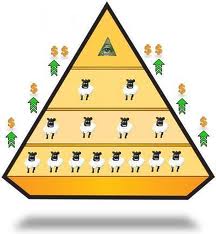
Cross-posted from Investing in Chinese Stocks.
A small/medium trading firm is at the center of the current story. The amount of metal involved is 100,000 tons of aluminum oxide and two to three thousand tons of copper, worth several hundred million yuan. As noted in yesterday’s post, Chinese media are reporting that iron ore may also be involved, though if so there may be more than one company involved. The port is operating normally as well; when it was reported in foreign media that all shipments stopped it caused a brief panic in the market. However, given the pattern of these cases, this is truly the tip of the iceberg. As one source said, these cases are exactly like the rehypothecated steel trading cases that are now clogging the courts of Shanghai, though as of yet we don’t know how large this problem has grown.
English: China Qingdao port probe fuels Standard Bank, Dreyfus unit worry
“Standard Bank Group is not yet in a position to quantify any potential loss arising from these circumstances,” the bank, whose Standard Bank Plc subsidiary conducts commodities trading, said in a statement.
Singapore-based logistics provider GKE Corporation Ltd warned shareholders that it was “assessing the potential impact” of the investigation on its GKE Metal Logistics Pte Ltd unit, a joint-venture 51 percent owned by global commodities merchant Louis Dreyfus.
They are the first companies to publicly discuss the issue since the inquiry came to light on Monday, when Reuters reported the port in northeastern China had halted shipments of copper and aluminu
Chinese media has more details, including the owner of the company being taken into police custody. The company is named Qingdao Decheng Mining. It is a wholesale and retail non-ferrous metals dealer, started in 2005. The company has several shareholders and repeats the cross-ownership pattern seen in the steel-trading cases and in Xiaoshan. On the latter: In wealthy Chinese city, debt guarantees spark default contagion:
Private firms often struggle to obtain credit from state-owned banks, which prefer to lend to state-owned firms due to their government backing.
That trend has worsened as economic growth slows, credit conditions tighten, and authorities work to reduce excessive investment and overcapacity in some sectors.
Steel and textile manufacturers in Xiaoshan, like other private firms around the YRD, sought to overcome such obstacles by providing loan guarantees for each other to gain bank credit.
Now defaults by a few companies threaten a chain reaction that could ensnare even profitable firms, as the guarantees have left them on the hook for debts of their bankrupt competitors.
Not only is one firm obtaining multiple loans from banks, but firms are colluding and obtaining multiple loans using the same collateral, up to as many as ten times. From 青岛港风波”追踪:始作俑者青岛德诚:
A large state-owned trading company official told the 21st Century Business Herald reporter, specific operating practices involved in the financing of copper and aluminum are exactly the same as the steel trade rehypothecation from two years ago. A third party warehousing company and a firm collude, and even collude with bank lending officers, use the same number of goods to issue multiple warehouse receipts, then split them up and find different banks to defraud.
With ¥1 billion in alumnimum, they could easily obtain ¥2 billion to ¥3 billion in loans from various banks.
“Basically behind each copper concentrate or alumina, there are three or four different banks involved with loans using the same collateral, and even some extreme cases, the same batch of goods in different companies, mortgage repeated from different banks, the actual loan amount zoom in ten times.”

